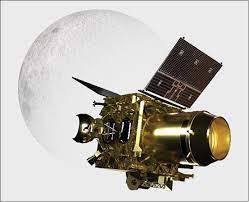16.11.2021
According to ISRO, a “very close conjunction” between Chandrayaan-2 orbiter and LRO of NASA was expected to occur on October 20 at 11.15 am Indian Standard Time near the lunar north pole.

The Indian Space Research Organisation (ISRO) said on Monday that it performed a “collision avoidance manoeuvre” (CAM) on October 18 to avoid a “critically close approach” of the orbiter of its moon mission Chandrayaan-2 and NASA’s robotic spacecraft of Lunar Reconnaissance Orbiter (LRO).
The official announcement on the ISRO website on Monday stated that following a discussion with Jet Propulsion Laboratory (JPL, which is the robotic exploration division of NASA) and NASA, it was “deemed that the situation warranted a CAM to mitigate the close approach risk, and it was mutually agreed that CH2O (Chandrayaan-2 orbiter) would undergo the CAM”.
According to ISRO, a “very close conjunction” between Chandrayaan-2 orbiter and LRO of NASA was expected to occur on October 20 at 11.15 am Indian Standard Time near the lunar north pole. A conjunction is an event in which two satellites or spacecrafts or a satellite and a piece of debris are estimated to pass near each other.
In the week ahead of the expected conjunction, “analyses by both ISRO and JPL/NASA consistently showed that the radial separation between the two spacecraft would be less than 100 metre and the closest approach distance would be only about 3 km”.
The CAM, which involves orbital correction, was designed to ensure a “sufficiently large radial separation at the closest conjunction between the two spacecraft” and was executed normally on October 18, with further post-manoeuvre analysis showing that there would be no further close conjunctions with LRO in the near future, according to ISRO.
The ISRO stated that “this is the first time such a critically close conjunction was experienced for a space exploration mission of ISRO which necessitated an evasive manoeuvre”.
Quelle: The Indian EXPRESS

